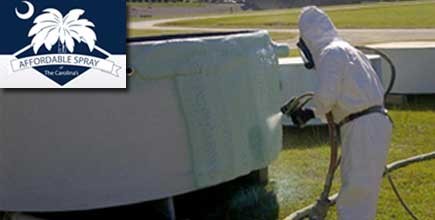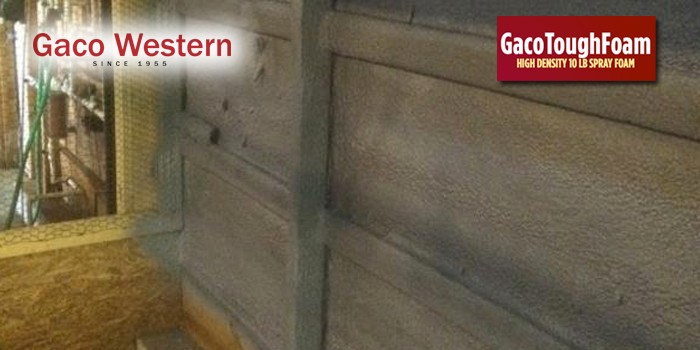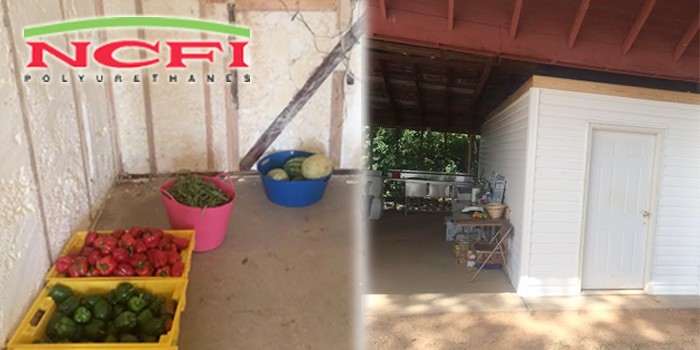Spray Polyurethane Foam Fortifies Fish Hatchery

BONNEAU, SC – December 19, 2014 – Fish rearing is a trade within itself: it requires discipline and dedication. The South Carolina Department of Natural Resources (DNR) operates several fish hatcheries in which different types of fish, including bass, American shad, and tilapia are monitored from their hatching period and reared until they can be moved to ponds and rivers.
These fish are kept in round fiberglass tanks during their rearing period. Having optimal, consistent temperatures inside these tanks is essential for the survival and development of the fish, which is why the DNR turned to spray polyurethane foam for the insulation of their outdoor fish tanks at DNR’s Jack D. Bayless hatchery. DNR’s Forrest Sessions explained that spray foam was the ideal type of insulation for these tanks due to the seamless barrier it provides for the tanks.
“The SPF allows the water temperatures to stay at a consistent temperature, which is important for the overall health and rearing of the fish,” said Sessions. “Additionally, spray foam allows for the water temperatures to remain at a high enough level for certain fish to be able to survive during the winter.”

DNR contracted Affordable Spray Foam Insulation of the Carolinas for the application, which consisted of applying spray foam to the exterior of eight, 12-foot-wide fiberglass tanks.
Larry Lavender, one of the two men that comprised the Affordable crew, said that spray foam was also the best choice of insulation because it adhered well to the circular shape of the tanks.
“The usage of closed-cell spray foam was ideal because it adhered well to the shape and substrate of the tank,” said Lavender. “Not only does the closed-cell SPF provide superb insulation and creates a seamless moisture barrier for these fiberglass tanks, it also provides structural integrity.”
Equipped with a Graco E-30 proportioner, the Affordable crew spent two hours insulating the fish tanks. They were careful to protect the asphalt road that surrounded their work area with vinyl tarps. The two-man crew wore Tyvek suits and full-face mask respirators during the application.
Sessions explained that the tank applications involved varying thicknesses of SPF at different times, but overall they installed to the exterior of tanks 2.5 to 3 inches of InsulStar, a 2.0 lb. closed-cell spray polyurethane foam made by NCFI Polyurethanes.
Using a Graco Fusion air-purge spray gun, the Affordable crew covered the circular exterior of the tanks with SPF. The crew installed 1.5 sets of foam throughout the application. Sessions pointed out that because the tanks were located outside, the protection rendered by the SPF foam would sustain the fish through the winter, giving peace of mind to the DNR.
“Freezing temperatures may be encountered in the outside area where tanks are located,” said Sessions. “However, with the spray foam insulation protecting the exterior, and the tops covered with insulation board, temperatures will remain in the low 60’s.”
This project was but a continuation of DNR’s faith in spray foam, as 15 of their fish tanks have now been sprayed with foam over the past decade.
About Affordable Spray Foam Insulation of the Carolina's: Affordable Sprayfoam Insulation of the Carolina’s, LLC is a locally veteran owned and operated spray foam insulation company. Their goal is to provide the highest quality products and superior service to our clients. ASPFC’s business is to make the homes that we insulate more comfortable and energy efficient. For more information, please use the contact information and links provided below.
Disqus website name not provided.









































